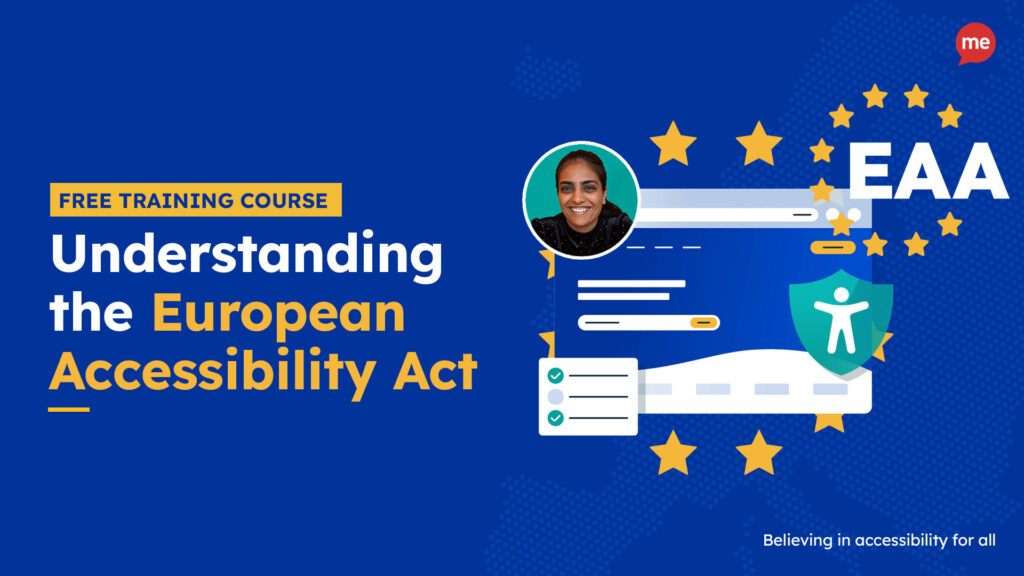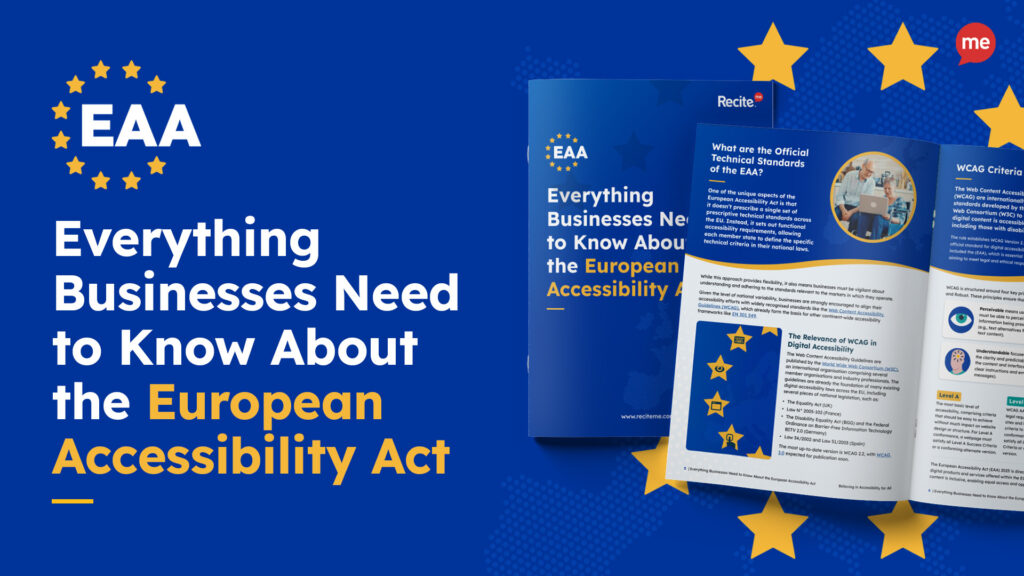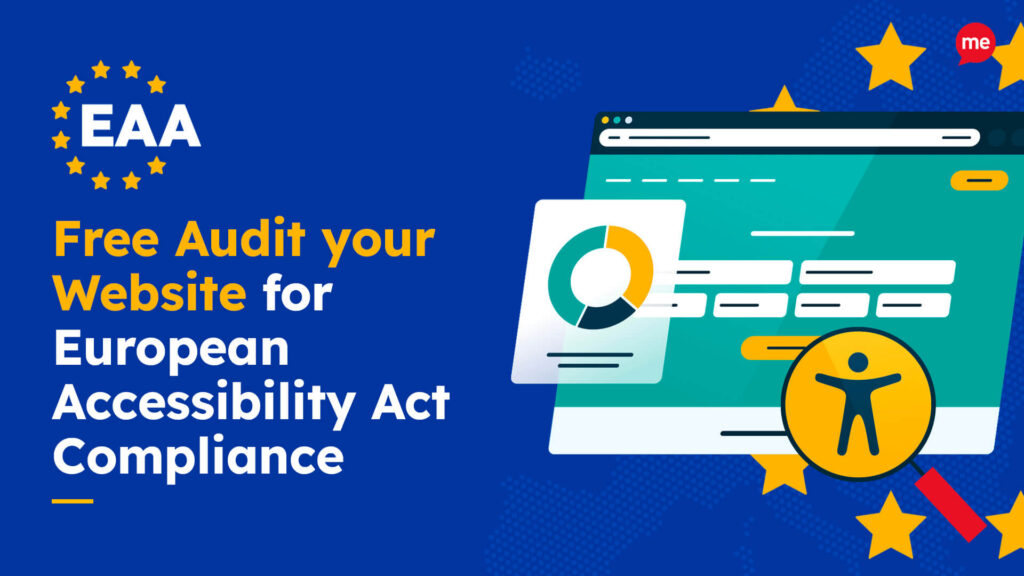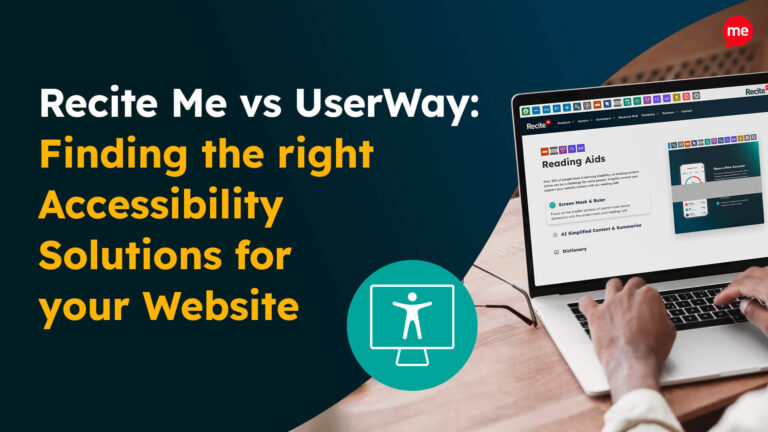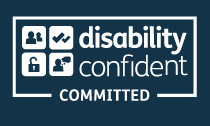Get Your Free Accessibility & Inclusion Toolkit
Download NowIn France, digital accessibility is mandated by Law No. 2005-102, which ensures equal rights and opportunities for persons with disabilities. This legislation led to the development of the Référentiel Général d’Amélioration de l’Accessibilité (RGAA), a framework that aligns with the Web Content Accessibility Guidelines (WCAG) and the European Accessibility Act in France.
In this guide you’ll learn more about how the RGAA works, who it applies to, the risks of non-compliance, and how you can ensure you follow the standards set by this legislation.
What is the Référentiel Général d’Amélioration de l’Accessibilité (RGAA)?
The Référentiel Général d’Amélioration de l’Accessibilité is France’s official framework for evaluating and ensuring the accessibility of digital content. The framework incorporates many elements that align with international standards like the Web Content Accessibility Guidelines. However, the RGAA makes slight adaptations to these criteria to ensure they conform to French laws and incorporate cultural differences.
The legislation serves as a practical tool for organisations to assess and improve the accessibility of their websites and digital services, ensuring they are usable by individuals with disabilities. Examples of the requirements set by the RGAA can include various aspects of digital content, including images, multimedia, navigation, and forms, helping to promote inclusive digital experiences.
Who does the RGAA apply to in France?
The Référentiel Général d’Amélioration de l’Accessibilité applies to a broad range of entities in France, encompassing both public and private sectors.

Private Sector
All public entities are mandated to comply with the RGAA. This includes:
- State institutions
- Local authorities
- Public establishments
These organisations must ensure that their digital services, such as websites and mobile applications, are accessible to individuals with disabilities.
Public Sector
Private companies are also subject to RGAA compliance under certain conditions:
- Large Enterprises: Companies operating in France with an annual turnover exceeding €250 million are required to adhere to RGAA standards.
- Entities with Public Service Missions: Organisations, regardless of their legal status, that are entrusted with a public service mission or serve the general interest. Some examples of organisations that must comply with RGAA include public transport companies, water and sanitation services, tourist offices, and cultural institutions.
It’s important to note that while smaller private companies are not explicitly required to follow the RGAA, they are still expected to ensure their digital content is accessible, aligning with the broader objectives of digital inclusivity.
Get a free automated accessibility check of your websites homepage. This will identify and highlight any compliance issues on your website. Followed by recommendations on how to implement the necessary changes to make your website more accessible.
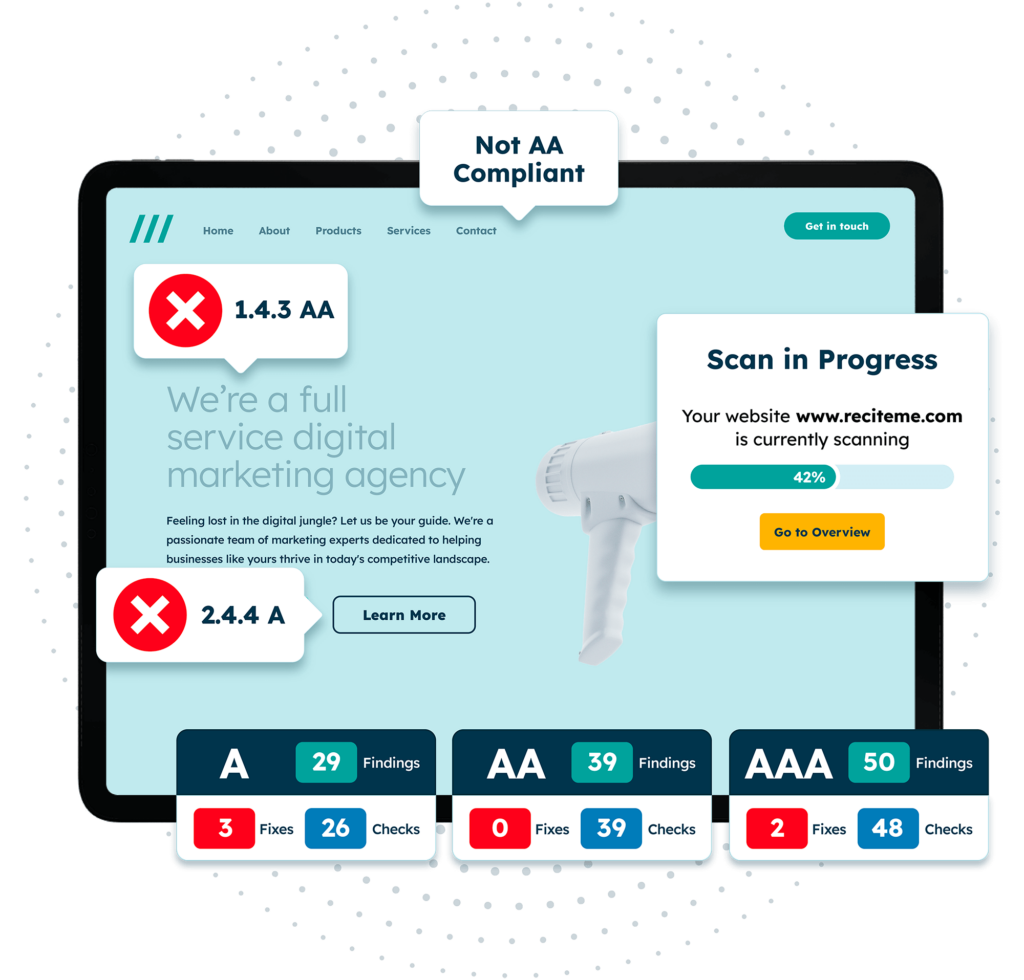
What requirements are set for businesses to comply with RGAA?
To adhere to the RGAA, businesses operating in France must implement specific measures to ensure their digital services are accessible to all users, including those with disabilities. These requirements can include:
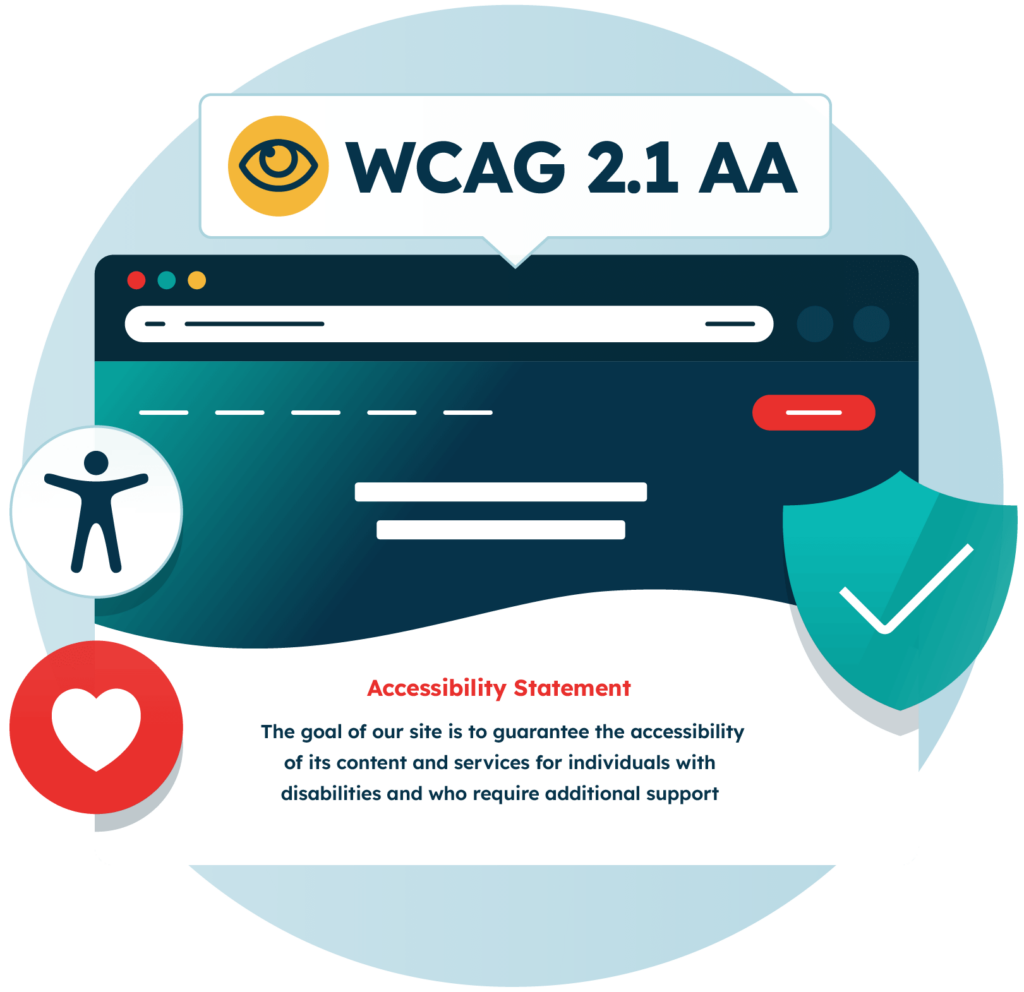
1. Publish an accessibility statement
Organisations are required to provide an online accessibility statement that transparently declares the current accessibility status of their website or application. This statement should be easily accessible, ideally linked in the website footer. The statement should indicate the level of compliance (fully compliant, partially compliant, or non-compliant) and include the overall compliance rate based on a representative sample.
2. Display RGAA compliance percentages
The website should display the RGAA compliance percentage, categorised as follows:
- Fully compliant: 100%
- Partially compliant: 50% or higher
- Non-compliant: Below 50%, or if the compliance status is unknown or untested
3. Implement a feedback mechanism
Businesses must establish a feedback mechanism that allows users to report any accessibility challenges they encounter. This mechanism should be accessible and user-friendly, enabling individuals to express difficulties or obstacles they face while using the digital service.
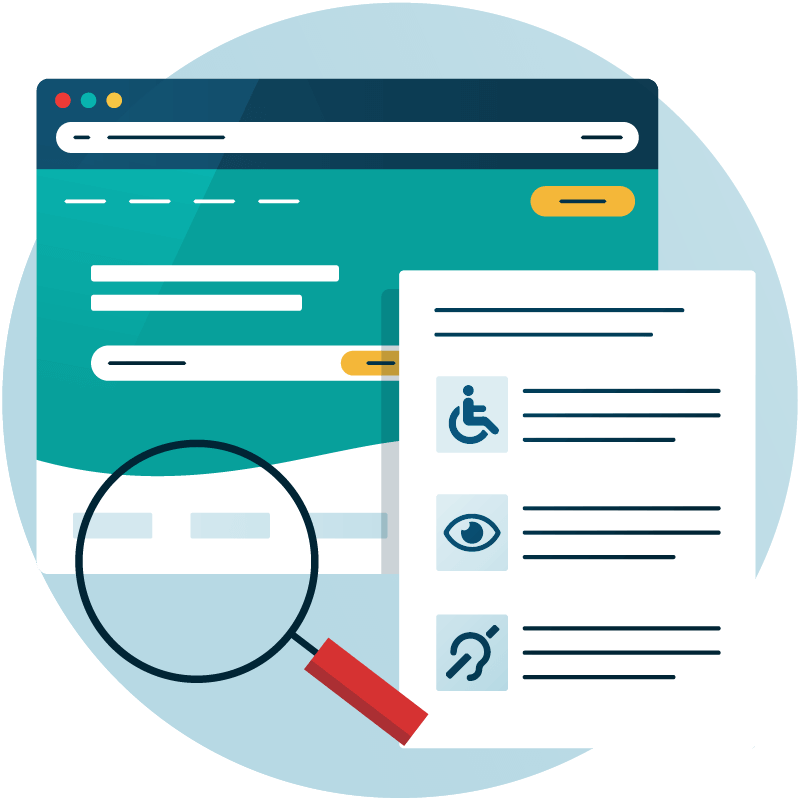
4. Provide contact information for the Rights Defender (Défenseur des droits)
In cases where users do not receive a satisfactory response to their accessibility concerns, organisations are obligated to provide contact details for the Rights Defender (Défenseur des droits). This ensures that users have a clear avenue to escalate their concerns if necessary.
What are the risks of not complying with French accessibility laws like the RGAA?
Non-compliance with France’s digital accessibility laws, particularly the RGAA, can lead to significant legal, financial, and reputational consequences for organisations. Let’s take a closer look at what you can expect:

Financial penalties
The Autorité de régulation de la communication audiovisuelle et numérique (ARCOM) has the authority to identify and sanction non-compliance with RGAA standards. Organisations that fail to meet RGAA standards may face substantial fines:
- Up to €50,000 per non-compliant digital service, renewable every six months if issues persist.
- €25,000 fines for failing to publish mandatory accessibility statements or multi-year accessibility plans, also renewable semi-annually.
Furthermore, under Decree No. 2023-931, which aligns with the European Accessibility Act, fines for non-compliance can reach up to €250,000 per violation. This decree applies broadly to both public and private sectors, emphasising the importance of adhering to accessibility standards in France.
Additional legal action and litigation
Individuals encountering accessibility barriers can file complaints with the Défenseur des droits (Rights Defender). Unresolved issues may escalate to legal proceedings, potentially resulting in costly settlements and further penalties.
Reputational damage
Beyond legal and financial repercussions, failing to comply with accessibility laws can harm an organisation’s reputation. In a time where inclusivity is increasingly valued, organisations perceived as neglecting accessibility may face public criticism, loss of customer trust, and diminished brand image.
Operational and business impacts
Non-compliance can also limit business opportunities, particularly for organisations seeking to engage with public sector clients or participate in government tenders, where accessibility compliance is often a requirement.
Additionally, inaccessible digital platforms can exclude a significant portion of the population, including approximately 6 million individuals in France with disabilities, thereby reducing potential user engagement and revenue.
Common RGAA accessibility violations and how to fix them
There are an abundance of potential RGAA accessibility violations that your website could face. Here is a shortlist of the most common issues and how you can fix them:
1. Insufficient colour contrast
Many websites fail to provide adequate contrast between text and background, making content difficult to read for users with visual impairments.
Solution: Ensure a minimum contrast ratio of 4.5:1 for standard text and 3:1 for large text or UI components. Tools like a Colour Contrast Checker can help verify compliance.
2. Improper form labelling
Forms without correctly associated labels can confuse users relying on screen readers.
Solution: Use <label> elements linked to their corresponding input fields via the for and id attributes. For complex forms, group related fields with <fieldset> and <legend> tags.
3. Missing or inadequate alternative text for images
Images lacking descriptive alternative text hinder screen reader users from understanding visual content.
Solution: Provide meaningful alt attributes for informative images. For decorative images, use empty alt attributes (alt=””) or aria-hidden=”true” to hide them from assistive technologies.
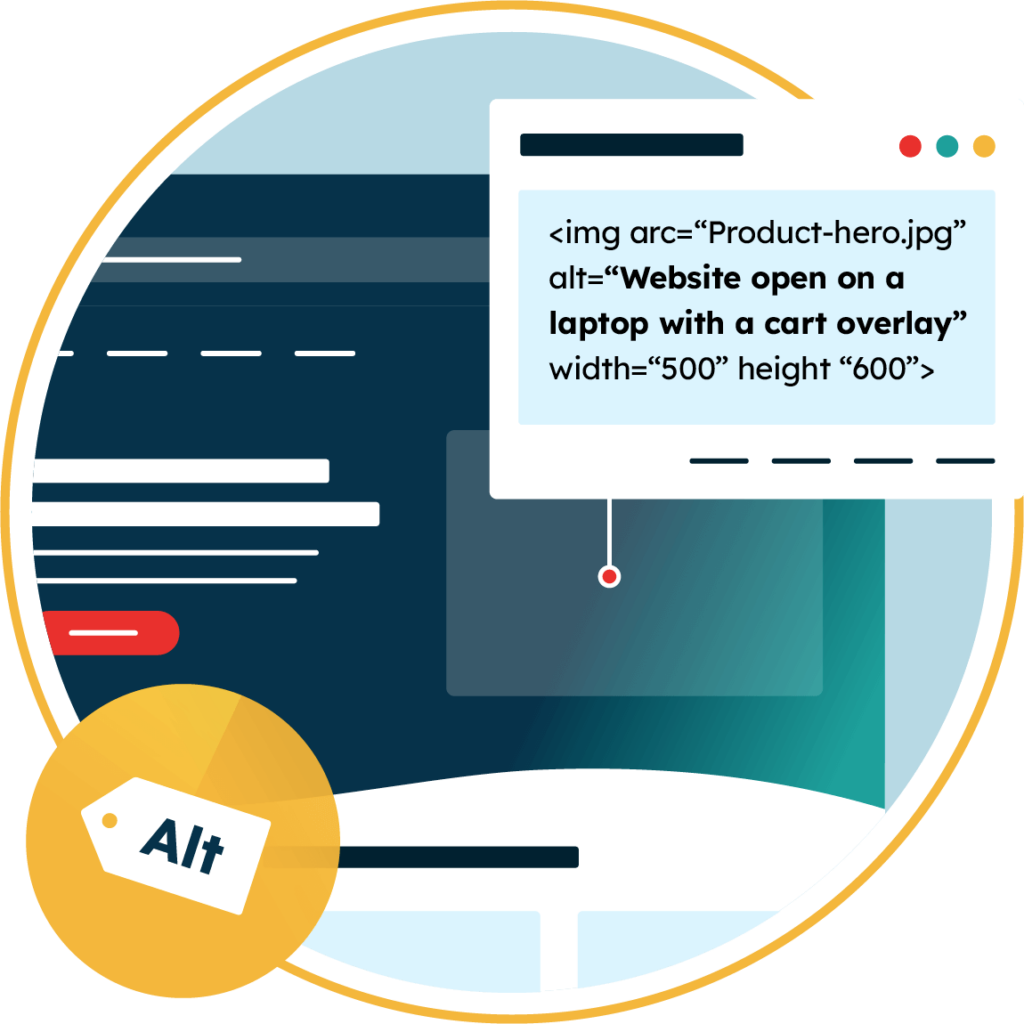
4. Inaccessible keyboard navigation
Some interactive elements are not operable via keyboard, posing challenges for users who cannot use a mouse.
Solution: Ensure all interactive components are reachable and usable with keyboard inputs. Implement visible focus indicators and logical tab order to facilitate navigation.

5. Unstructured headings and content
Improper use of heading levels and lack of semantic structure can disorient users navigating with assistive technologies.
Solution: Organise content using a hierarchical structure with appropriate heading tags (<h1> to <h6>). Utilise semantic HTML elements like <nav>, <main>, and <section> to define content areas clearly.
6. Reliance on colour alone to convey information
Using colour as the sole means to indicate information, such as errors in forms, can be problematic for colour-blind users.
Solution: Supplement colour cues with text labels or icons to convey information effectively to all users.
7. Non-accessible multimedia content
Videos and audio content without captions or transcripts exclude users with hearing impairments.
Solution: Provide synchronised captions for videos and transcripts for audio content. Avoid autoplay features and ensure media controls are accessible via keyboard.

8. Dynamic content not announced to assistive technologies
Content updates, such as form validation messages, that are not communicated to screen readers can lead to confusion.
Solution: Implement ARIA live regions (aria-live) to notify assistive technologies of dynamic content changes.
Our Website Accessibility Checklist guides you through the essential elements of an inclusive website with simple, actionable steps. Whether you’re just getting started or looking to improve your existing site, this checklist will help you create a better experience for all users.

Tools to help with accessibility compliance in France
Achieving RGAA compliance doesn’t need to be a difficult task in France. To support this, we offer a suite of tools and resources designed to streamline the compliance process and ensure inclusive digital experiences for your website visitors. Here’s what you can expect:

Automated accessibility testing
An accessibility checker tool provides an automated scan of your website that tests for adherence to RGAA standards. This tool quickly identifies common accessibility issues, such as insufficient colour contrast, missing alternative text, and improper form labeling. By integrating these tools into your development workflow, you can proactively address accessibility concerns and ensure ongoing compliance.
Website accessibility checklist
To assist in manual accessibility testing, we offer a comprehensive website accessibility checklist aligned with RGAA criteria. This checklist guides you through essential aspects of digital accessibility, including keyboard navigation, semantic HTML structure, and multimedia alternatives. Utilising this resource helps ensure that your digital content meets the necessary accessibility requirements.
Download an accessibility statement template
Compliance with French accessibility laws, such as the RGAA, includes the publication of an accessibility statement. To facilitate this, we offer a ready-to-use accessibility statement template that aligns with RGAA requirements. This template simplifies the process of documenting your organisation’s accessibility efforts and demonstrates your commitment to providing inclusive digital services.
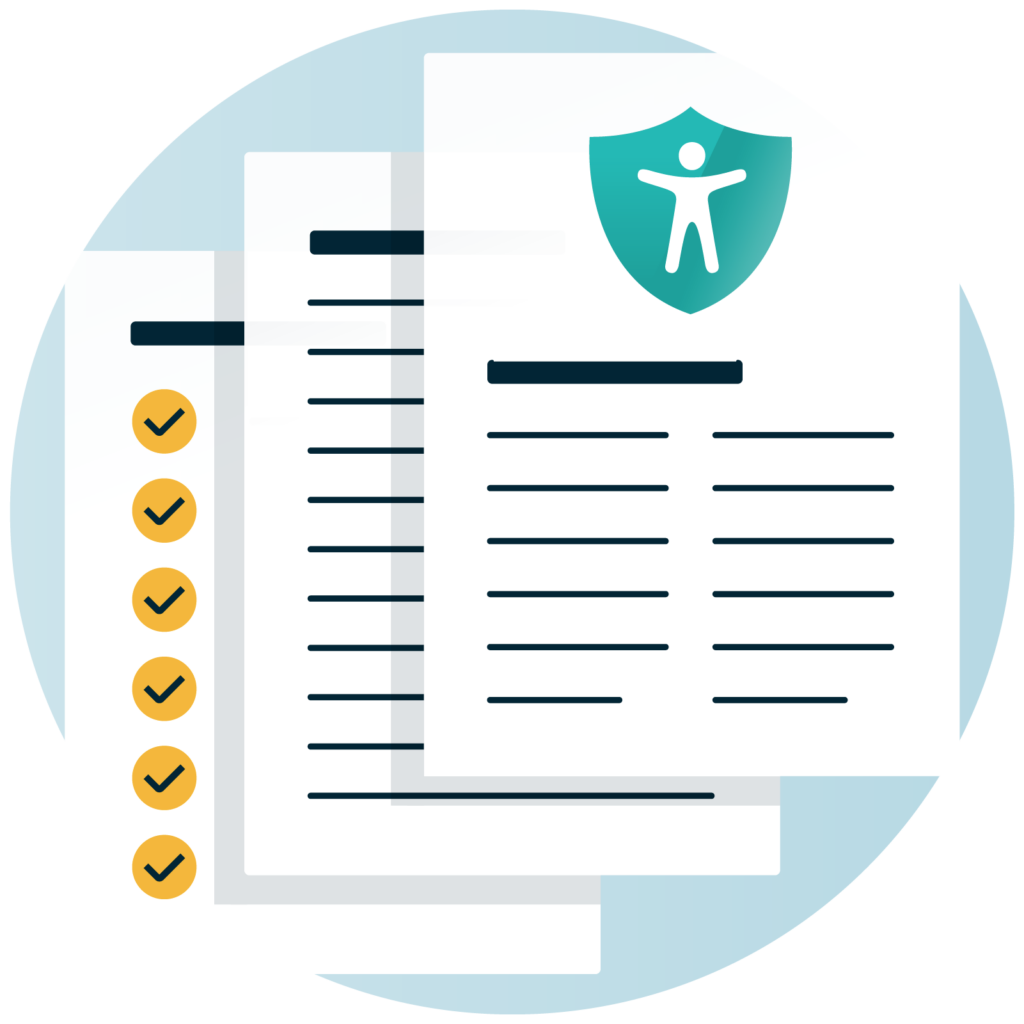
Accessibility training for employees
Empowering your team with knowledge about digital accessibility is crucial. We provide specialised accessibility training programs tailored to various roles within your organisation, such as developers, designers, and content creators. These programs cover the principles of RGAA compliance, practical implementation strategies, and the importance of inclusive design, creating a culture of accessibility awareness.
Final verdict on the RGAA accessibility law
The RGAA stands as a pivotal component of France’s commitment to digital inclusivity, mandating that both public entities and qualifying private companies ensure their digital services are accessible to all users, including those with disabilities. With enforcement in place and substantial penalties for non-compliance, adherence to RGAA standards is not only a legal obligation but also a reflection of an organisation’s dedication to social responsibility and equal access.
If you’d like to receive additional support or information you can contact our accessibility experts.
Accessibility resources for compliance in Europe
The following resources are packed full of actionable tips and expert advice for making your digital content compliant with the European Accessibility Act:
Free EAA Compliance Training
Take the first step to European Accessibility compliance by completing our EAA training course.
Free EAA Compliance Guide
Ensure your organisation is meeting the necessary requirements for European Accessibility Act compliance.
Free EAA Audit of your Website
Download a free accessibility check of your website. This report will highlight any EAA non-compliance and how to fix it.

